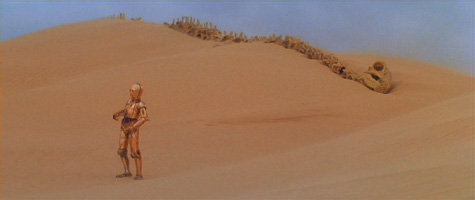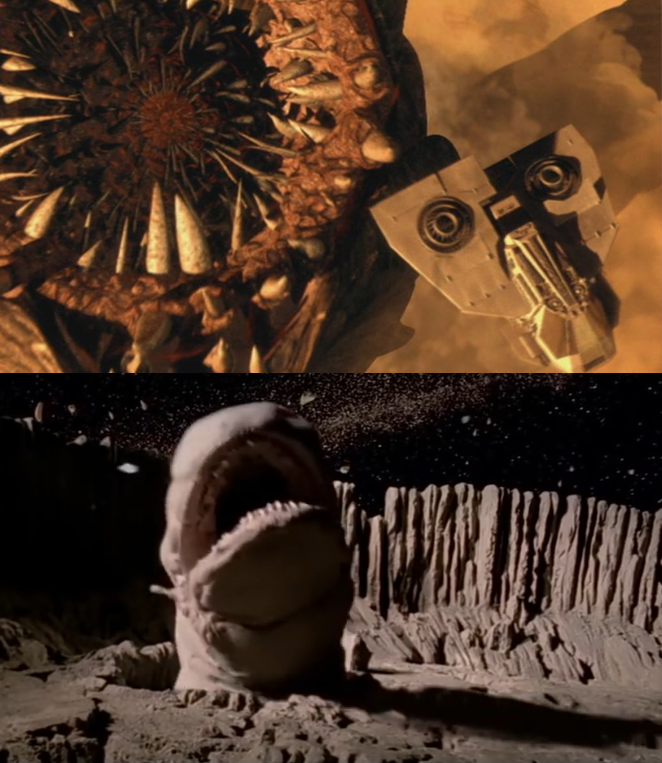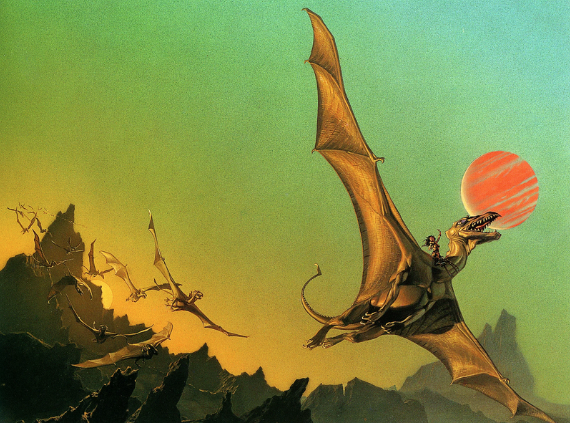While Dune’s influence on subsequent science-fiction and fantasy works is vast, the two franchises on which it’s had the most obvious impact in particular are Star Wars and Game of Thrones / Song of Ice and Fire.
Of course SPOILERS for all three series:
Star Wars parallels:

- There’s a galactic empire, with royal houses, commercial guilds, and a less than benevolent Emperor.
- The setting is so distant in time and space that Earth is either unknown or nonexistent.
- The hero to whom we’re first introduced is an orphaned boy on a desert planet, the subject of messianic prophecies, with a mystical destiny based on his bloodline, who turns out to be the son/grandson of the main villain.
- There’s an ancient order of priest(ess)-magicians, trained in manipulation and mind control.
- There’s a desert-dwelling warrior group wearing special suits.
- There’s a constant danger of the good guys being taken over by the dark side of their powers.
- There’s an entire planet devoted to making clones.
- One protagonist foresees, by mystical means, that his wife will die in childbirth, a future he attempts unsuccessfully to prevent – but he mistakenly foresees a single child when in fact twins are born, a boy and a girl, mystically linked and sharing an important destiny.
- Spice mines, technology for moisture farming a.k.a. dew collecting, and vehicles called sandcrawlers are all featured.
- The Krayt dragon skeleton in ANH, the asteroid slug in ESB, and the Sarlacc in ROTJ all resemble sandworms.
- Jabba the Hutt resembles a major sandworm/human hybrid character in the fourth Dune book.
- Arrakis has twin moons, and a messianic protagonist takes his name from one of them; Tatooine has twin suns, which are the basis for the messianic title “Son of the Suns.”
- Even the names “Anakin” and “Arrakis/Arrakeen” look a bit alike.

Depriving the giant worm of its tasty flying snack.
Game of Thrones / Song of Ice and Fire parallels:
- The setting is a world with an unusual ecology.
- There are feuding noble houses, with the leader of the most honourable house being betrayed and murdered early on by representatives one of the least honourable houses, causing his child/children to go on the run.
- One protagonist, the heir of an exiled noble house, finds shelter with a nomadic desert tribe, rises to become their ruler, learns to ride gigantic dangerous sandworms/dragons, is the subject of messianic prophecies, and leads a heroic revolt against oppressors, but is nevertheless in constant danger of succumbing to the temptation to follow in the footsteps of his/her crazy/evil ancestor.
- Another protagonist, a boy with prophetic visions, eventually transcends his humanity and becomes the supreme ruler.
- There’s a secret community of people who’ve developed the ability to alter their faces at will, called “Face Dancers” in Dune and “Faceless Men” in Game of Thrones (and the latter come from the same city as the “Water Dancers”).
- An elegant, devious, and powerful witch serves as a royal advisor but really seeks to advance the messianic prophecies of her order.

(Of course another influence on Game of Thrones is Anne McCaffrey’s Dragonrider series. A female protagonist who learns how to ride dragons is the most obvious parallel, but we’ve also got political intrigue in a quasi-feudal but non-Earth setting, and a cyclically recurring existential threat to which dragonfire plus an ancient order of guardsmen are the crucial antidote, but it’s been so long since the threat last manifested that most people dismiss it as a myth.)

[…] blogged before (see here, here, and here) about the influence of the Dune series on Star Wars. But I’ve recently reread […]